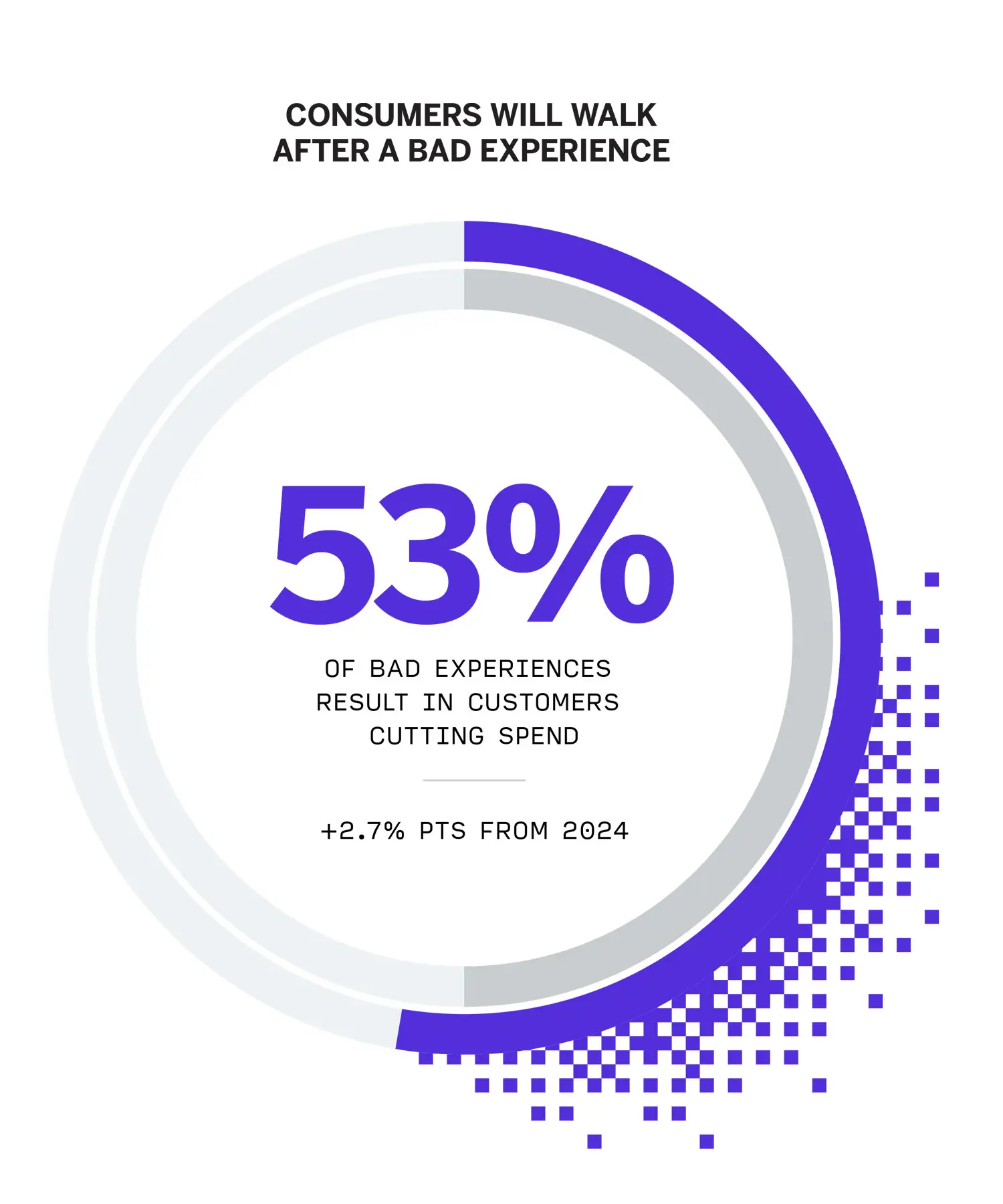
Integrating Call Tracking with Omnichannel Marketing Strategies
- touseeq94
- No Comments
In today’s competitive business landscape, delivering a seamless customer experience across multiple channels is vital. Omnichannel marketing—the practice of creating a cohesive brand experience across online, offline, and mobile channels—has emerged as a cornerstone for effective customer engagement. An essential tool in achieving this integration is call tracking, which provides critical insights into how customers interact with a business. By integrating call tracking into omnichannel marketing strategies, businesses can enhance their decision-making, improve customer experiences, and maximize return on investment (ROI). This synergy not only ensures efficient resource allocation but also empowers businesses to adapt quickly to changing consumer behaviors.
Understanding Call Tracking
Call tracking is a technology that assigns unique phone numbers to various marketing campaigns, channels, or touchpoints. When customers make calls, businesses can identify the source of the call, such as a specific advertisement, social media post, or landing page. Advanced call tracking systems provide even deeper insights by capturing call recordings, transcriptions, and customer data, such as demographics and call duration. These features enable businesses to gain a granular understanding of customer preferences and pain points. Furthermore, integrating call tracking with other analytics tools ensures a comprehensive approach to measuring marketing performance. This data equips businesses with actionable intelligence to understand customer behavior, refine marketing strategies, and allocate resources effectively. By leveraging these insights, businesses can improve customer satisfaction and streamline their sales processes. In essence, call tracking bridges the gap between digital and human interactions, providing a complete view of the customer journey.
The Role of Omnichannel Marketing
Omnichannel marketing aims to create a unified and consistent customer journey, whether the interaction occurs on a website, through email, via social media, or in a physical store. Unlike multichannel marketing, which may treat each channel independently, omnichannel marketing ensures that all channels work together seamlessly. This approach fosters a cohesive brand identity that resonates with customers across touchpoints. For example, a customer who starts their journey by clicking on a Google ad and later calls the business should experience continuity in their interaction. Omnichannel marketing not only improves customer satisfaction but also boosts brand loyalty by providing a holistic experience. Call tracking can bridge this gap by connecting online and offline touchpoints. By understanding the customer’s path, businesses can tailor their messaging and offer personalized solutions. Moreover, omnichannel strategies enable businesses to respond proactively to customer needs, creating a sense of reliability and trust. This level of integration is key to building long-term customer relationships and staying competitive in the market.

Benefits of Integrating Call Tracking into Omnichannel Marketing
1. Enhanced Customer Journey Mapping
Call tracking allows businesses to trace the complete customer journey by identifying how customers interact with various channels before, during, and after a call. This insight helps marketers understand which touchpoints drive engagement and conversions. For example, a customer might see a Facebook ad, visit the website, and then make a call. By tracking these steps, businesses can identify the most influential channels and optimize their strategies accordingly. Additionally, customer journey mapping helps uncover potential bottlenecks or gaps in the process, enabling businesses to make necessary improvements. With a clearer view of the customer’s path, companies can create targeted campaigns that resonate with their audience. This, in turn, enhances customer satisfaction and drives higher conversion rates. Moreover, comprehensive journey mapping empowers businesses to anticipate customer needs and deliver proactive solutions. By integrating call tracking into this process, businesses can achieve a more nuanced understanding of their audience.
2. Data-Driven Decision Making
Integrating call tracking with omnichannel marketing provides a wealth of data that can guide strategic decisions. Marketers can analyze call data alongside other metrics, such as click-through rates (CTR), email open rates, and website traffic, to identify trends and adjust campaigns for better performance. For instance, if a particular campaign generates a high volume of calls but low conversion rates, businesses can review call recordings to identify potential issues and refine their approach. This data-driven approach ensures that marketing budgets are spent wisely and effectively. Furthermore, businesses can use these insights to forecast future trends and make proactive adjustments. Data from call tracking also enables segmentation, allowing businesses to target specific customer groups more effectively. This level of granularity helps companies allocate resources to high-performing areas and improve overall efficiency. Ultimately, a data-driven strategy fosters innovation and adaptability, key traits for long-term success.
3. Improved Attribution Models
Accurate attribution is a common challenge in marketing. Call tracking helps businesses assign credit to the correct channels, providing a clearer picture of which strategies drive results. This insight ensures that resources are allocated to the most effective channels, boosting overall efficiency. For example, understanding which keywords lead to phone calls can help businesses optimize their pay-per-click (PPC) campaigns. Attribution models that include call data offer a more comprehensive view of customer interactions across channels. This, in turn, helps businesses identify areas for improvement and allocate budgets more strategically. Furthermore, accurate attribution strengthens reporting and enables marketers to demonstrate ROI to stakeholders. By incorporating call tracking data, businesses can refine their strategies and ensure that every dollar spent contributes to measurable outcomes. Enhanced attribution also fosters better collaboration among teams, ensuring alignment in achieving business goals.
4. Personalized Customer Experiences
By integrating call tracking data into customer relationship management (CRM) systems, businesses can create more personalized interactions. For example, a customer who previously inquired about a specific product can be greeted with relevant information during follow-up calls or interactions. Personalization not only enhances customer satisfaction but also builds loyalty and trust. Call tracking data provides valuable insights into customer preferences, enabling businesses to tailor their offerings. Additionally, businesses can use this data to anticipate customer needs and deliver proactive solutions. Personalization extends beyond individual interactions, influencing broader marketing strategies. By segmenting customers based on call data, businesses can design targeted campaigns that resonate with specific audience groups. This approach ensures that marketing efforts are relevant and impactful, driving higher engagement and conversion rates. Ultimately, personalized experiences set businesses apart in a crowded market, fostering long-term customer relationships.
5. Higher ROI
With better attribution, improved customer insights, and optimized marketing efforts, integrating call tracking into omnichannel strategies can significantly increase ROI. Businesses can reduce wasted ad spend and focus on campaigns that generate the most value. For example, identifying high-performing keywords or channels allows businesses to allocate budgets more effectively. Additionally, call tracking helps uncover inefficiencies, enabling businesses to refine their processes and improve profitability. By leveraging call data, companies can create more effective marketing campaigns that resonate with their audience. This, in turn, drives higher engagement, conversions, and revenue. Moreover, integrating call tracking into analytics platforms provides a holistic view of performance, ensuring that all efforts contribute to business goals. Over time, this data-driven approach fosters continuous improvement and sustainable growth. Higher ROI also enhances stakeholder confidence, ensuring continued investment in innovative strategies.
Call Tracking and Customer Retention
Integrating call tracking into your omnichannel strategy not only drives customer acquisition but also enhances retention efforts. By analyzing call data, businesses can identify patterns in customer behavior and address concerns proactively. For instance, recurring issues highlighted in call recordings can be resolved to improve the overall customer experience. Additionally, businesses can use call tracking insights to personalize follow-up communications, such as sending targeted emails or exclusive offers. Retention-focused strategies ensure that existing customers feel valued, fostering loyalty and advocacy. Over time, this leads to higher customer lifetime value (CLV) and sustainable business growth.
Overcoming Common Challenges in Call Tracking Integration
While integrating call tracking with omnichannel marketing offers numerous benefits, it also presents challenges. For example, businesses may struggle with data silos or lack of integration between call tracking platforms and other tools. To overcome these issues, invest in solutions that offer robust API capabilities and seamless integrations. Additionally, training staff to use call tracking tools effectively ensures that data is utilized to its full potential. Regularly reviewing and updating processes helps address any technical or operational bottlenecks. By tackling these challenges head-on, businesses can unlock the full potential of call tracking.

The Future of Call Tracking in Omnichannel Marketing
As technology continues to evolve, the role of call tracking in omnichannel marketing will expand. Emerging trends such as AI-powered analytics and voice recognition are set to revolutionize how businesses analyze call data. These advancements will enable even deeper insights into customer behavior, helping businesses stay ahead of the curve. Additionally, as consumer expectations for seamless experiences grow, integrating call tracking will become increasingly essential. Businesses that embrace these innovations will be well-positioned to deliver exceptional customer experiences and drive sustained growth. The future of call tracking lies in its ability to adapt to new technologies and consumer demands, ensuring its relevance in the ever-changing marketing landscape.
Best Practices for Integrating Call Tracking into Omnichannel Strategies
1. Choose the Right Call Tracking Solution
Invest in a call tracking platform that integrates seamlessly with other marketing tools, such as Google Analytics, CRM systems, and email marketing platforms. Look for features like dynamic number insertion, call recording, and advanced reporting. Additionally, prioritize solutions that offer robust security and compliance features to protect customer data. Evaluate multiple options to find a platform that aligns with your business needs and goals. Don’t hesitate to leverage trial periods or demos to assess usability and functionality. By selecting the right solution, businesses can ensure a smooth integration process and maximize the benefits of call tracking. This foundational step is crucial for long-term success.
2. Set Clear Goals
Define specific objectives for integrating call tracking into your marketing strategy. For example, you might aim to improve lead quality, increase conversions, or enhance customer retention. Clear goals provide a roadmap for implementation and help measure success. Additionally, align these objectives with broader business goals to ensure consistency across departments. Regularly revisit and update goals to reflect changing priorities or market conditions. By maintaining a clear focus, businesses can maximize the impact of their call tracking efforts and achieve measurable outcomes. Goal-setting also fosters accountability, ensuring that teams remain aligned and motivated.
3. Implement Dynamic Number Insertion (DNI)
DNI technology automatically displays unique phone numbers based on the customer’s source, such as a paid ad or organic search. This ensures accurate tracking and attribution for all inbound calls. By implementing DNI, businesses can gain a granular understanding of which campaigns and channels drive results. Additionally, DNI simplifies the process of tracking offline interactions, such as calls generated from print ads or direct mail campaigns. This technology bridges the gap between online and offline marketing efforts, creating a cohesive view of performance. Regularly review and optimize DNI settings to ensure accuracy and relevance. Over time, this approach enhances the efficiency and effectiveness of marketing strategies.
4. Integrate with Analytics Platforms
Combine call tracking data with other analytics tools to gain a holistic view of your marketing performance. For instance, integrating with Google Analytics enables you to track calls as conversions, providing a more comprehensive understanding of campaign success. This integration ensures that call tracking data is not siloed, enabling businesses to analyze it alongside other key metrics. Additionally, use analytics platforms to create custom reports that highlight trends and insights. By leveraging this data, businesses can refine their strategies and improve ROI. Regularly review integration settings to ensure data accuracy and consistency. A well-integrated analytics approach empowers businesses to make informed decisions and drive growth.
5. Leverage AI and Machine Learning
Advanced call tracking platforms often incorporate AI and machine learning to analyze call data, identify trends, and offer predictive insights. Use these capabilities to refine your omnichannel strategies further. For example, AI-powered sentiment analysis can identify customer emotions during calls, providing valuable insights into their needs and expectations. Additionally, predictive analytics can forecast call volumes and help businesses allocate resources effectively. By staying ahead of technological advancements, businesses can maintain a competitive edge. Regularly explore new AI-driven features and tools to enhance call tracking capabilities. This proactive approach ensures that businesses remain innovative and adaptable.
6. Monitor and Optimize Regularly
Continuously review call tracking data and other marketing metrics to identify areas for improvement. Test different strategies and make adjustments to enhance performance over time. For example, analyze call duration and conversion rates to assess the effectiveness of sales scripts or marketing campaigns. Regular optimization ensures that call tracking efforts remain aligned with business goals. Additionally, involve cross-functional teams in the review process to gain diverse perspectives and insights. By fostering a culture of continuous improvement, businesses can maximize the impact of their call tracking integration. This commitment to optimization drives long-term success and growth.

Real-World Example: A Case Study
A retail business implemented call tracking as part of its omnichannel strategy. By assigning unique phone numbers to various marketing campaigns, the company discovered that 40% of its inbound calls originated from Google Ads, while 25% came from social media campaigns. This insight allowed the business to reallocate its advertising budget, focusing on high-performing channels. Additionally, call recordings revealed common customer inquiries, enabling the company to update its website FAQ section and reduce call volume for routine questions. The result was a 20% increase in conversion rates and a 15% reduction in customer service costs. These improvements highlight the transformative potential of integrating call tracking into omnichannel strategies. The company also used insights from call tracking to train its staff, further enhancing the customer experience. Over time, this approach contributed to sustained growth and profitability.
The Future of Marketing: Why Call Tracking Integration is Essential
Integrating call tracking with omnichannel marketing strategies is a powerful way to bridge the gap between online and offline interactions, enhance customer experiences, and drive business growth. By leveraging the insights gained from call tracking, businesses can create more targeted and effective marketing campaigns, improve attribution models, and maximize ROI. In an era where customer expectations are higher than ever, this integration is not just an advantage—it’s a necessity for businesses aiming to stay ahead of the competition. Businesses that embrace call tracking as part of their omnichannel strategy position themselves for long-term success, fostering customer loyalty and innovation. As technology continues to evolve, the role of call tracking will only grow, making it an indispensable tool for modern marketing
